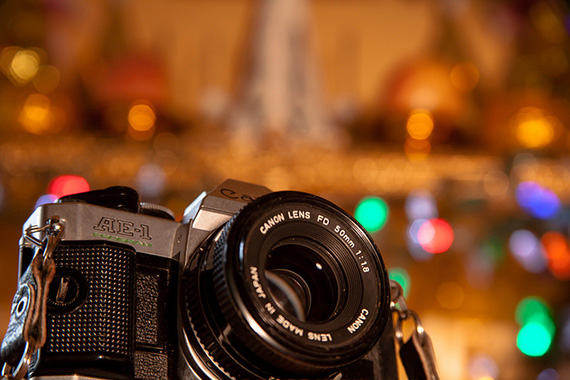Over my nearly twenty years of teaching university photography classes, I’ve come to discover that one area that students often have the hardest time mastering is depth of field. Whereas beginning students usually manage to work well with their cameras in manual mode, which forces them to make their own selections of apertures and shutter speeds, they often seem to overlook using a limited area of focus to create more striking images.

f/6.3, photo by Sodanie Chea
I think one explanation for why this approach isn’t explored more by many students is that they aren’t active enough when they’re out shooting. They see something in the distance that interests them, and I fear too often they just take the shot from that point and don’t investigate much further.
What, then, is depth of field (DoF)? Basically, it’s the term used to describe the area in a photograph that is in focus from the point nearest to the camera to the point farthest from the camera. What’s interesting about this concept is precisely that this distance can change radically according to different settings and choices made by the photographer.
What Creates Different Ranges of Focus?
1. Aperture size. Large aperture openings like f/2 or f/2.8 will have among the shortest or shallowest of range of focus. A smaller portion of the photograph is in focus when using these larger apertures. Smaller openings, like f/11, f/16, and f/22, result in a progressively bigger depth of field, as the opening is smaller (bigger numbers = smaller openings). More of the photograph is in focus.

f/5.6, photo by Paul Wan
2. Lens type. Wide angle lenses tend to have a greater range of focus than longer telephoto lenses. The same is true even with zoom lenses. When you’re zoomed to a wider angle, such as 35mm or smaller, you have a bigger depth of field than when the lens is zoomed to 100mm or higher.
3. Focal distance. This may actually be the most important setting for determining whether you have a very narrow or very wide range of focus. If the absolute focus point is set on a point less than a meter away from the camera, you will have a much shallower depth of field than if your focal point is 10 meters or more from the camera.
Consequently, although an f/2.8 aperture setting where you focus on a subject less than a meter from the camera has a shallower range of focus than the same picture taken with a smaller aperture (f/8, f/11, f/16, etc.), both images will have relatively shallow DoF precisely because the camera is focused very close. You’re likely to find that the DoF becomes narrower as you move into tighter quarters which prevent focusing on objects from a greater distance.
Now, why is all this important?
Clearly, when something is in focus it draws the attention of the viewer. In this way, a shallow range of focus helps direct the viewer’s eyes toward parts of the picture that are more important. Likewise, when taking a portrait against a background that is a bit distracting, a shallow DoF can limit the area in focus primarily to the subject and soften the background.
About The Author:
Michael McCarthy (www.michael-mccarthy.com) writes art/photo exhibit reviews and articles about issues in the arts for the Atelier Vagabond blog (www.ateliervagabond.com) while also offering short photo tours, workshops and classes in these areas in the Paris, France region. Visit the Atelier Vagabond site to learn more about class offerings.
Like This Article?
Don't Miss The Next One!
Join over 100,000 photographers of all experience levels who receive our free photography tips and articles to stay current:







I was very excited to read the title Depth of Field explained and was eager to find new ways to explain the concept to my students.
I was disappointed by the brevity of the article.
I was not expecting a Physic’s lesson on optics (although that may help too.)
But I found the information provided did not address the issue that these three DoF factors are interrelated and the beginner should be aware of the interrelationship between them.
Personally, I would also prefer to use correct terminology, particularly at University level.
1. Is Correct, 2 Should read Focal length, 3 should read subject distance.
Novices usually go out and shoot using F:2.8 on a 28mm Wide Angle lens and wonder why the pictures have a great DoF.
McCarthy miss a critical element in determining DoF. The sensor size is a major determinant in addition to Aperture, focal length (NOT LENS TYPE) and distance to subject (NOT Focal Distance) The depth of field is very different with the same three settings on Crop Camera (Cannon T4i 1.6, Nikon 7100 1.5)) than on a full frame camera. Go to http://www.dofcalculator.com and download the calculator. The reason DoF is not an issue on point and shoot cameras is that the sensor is so small. Imprecise language creates confusion not education.
Good, although the 2) should be called ‘Lens Focal Distance’ and the 3) should be called ‘Subject Distance’.
Keep up the good work.